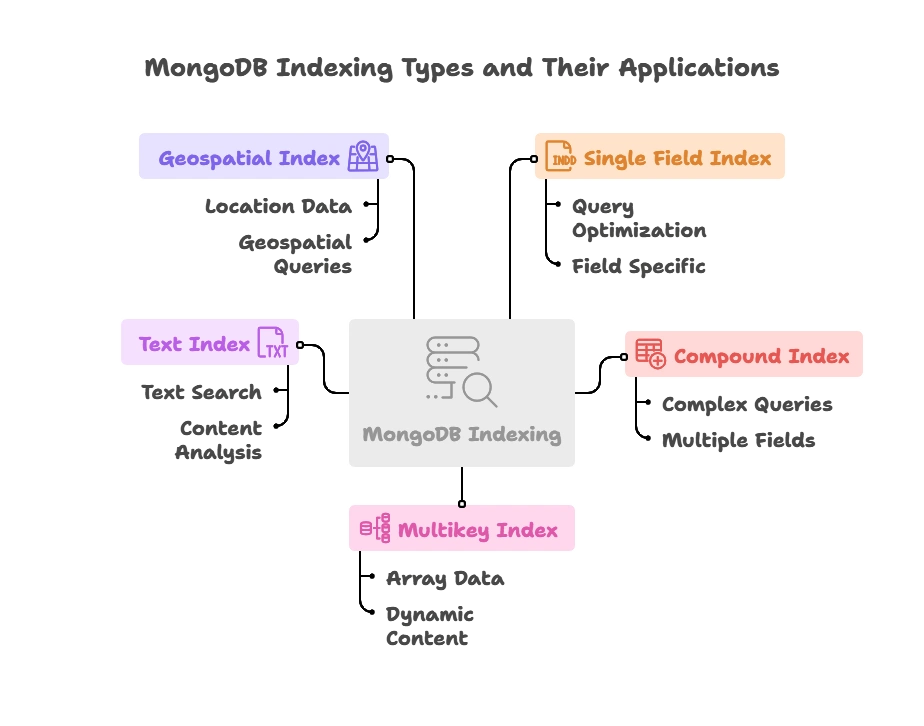MongoDB Data Model
In this chapter, we will delve into the MongoDB data model, exploring how data is structured, stored, and manipulated within a MongoDB database. From basic concepts to advanced techniques, we will cover everything you need to know to effectively model your data in MongoDB.
Basic Concepts of MongoDB Data Model
Documents
In MongoDB, data is stored as documents, which are JSON-like objects composed of field-value pairs. Documents provide a flexible and dynamic schema, allowing you to store complex data structures.
Example of a document:
{
"_id": ObjectId("507f1f77bcf86cd799439011"),
"name": "Alice",
"age": 29,
"address": {
"street": "123 Main St",
"city": "Springfield",
"state": "IL"
},
"hobbies": ["reading", "gardening"]
}
Collections
Documents are grouped into collections. A collection is a group of documents stored in MongoDB, and it is analogous to a table in relational databases.
Databases
Collections are grouped into databases. A MongoDB server can host multiple databases, each containing its own collections and documents.
Data Types in MongoDB
MongoDB supports a wide variety of data types, including:
- String: Textual data
- Number: Integer or floating-point numbers
- Boolean: True or false
- Date: Date and time
- Array: List of values
- Object: Embedded documents
- Null: Null value
- ObjectId: Unique identifier for documents
Example of a document with various data types:
{
"name": "Alice",
"age": 29,
"isStudent": false,
"enrollmentDate": ISODate("2020-01-15T00:00:00Z"),
"courses": ["Math", "Science"],
"profile": {
"height": 160,
"weight": 55
},
"tags": null,
"_id": ObjectId("507f1f77bcf86cd799439011")
}
Schema Design
Schema-less Nature
MongoDB is schema-less, meaning documents in the same collection do not need to have the same set of fields or data types. This provides flexibility in data modeling.
Embedded Documents
Embedded documents allow you to nest documents within other documents, creating a hierarchical data structure.
Example:
{
"name": "Alice",
"address": {
"street": "123 Main St",
"city": "Springfield",
"state": "IL"
}
}
Referenced Documents
Referenced documents store relationships between documents using references, similar to foreign keys in relational databases.
Example:
// User document
{
"_id": ObjectId("507f1f77bcf86cd799439011"),
"name": "Alice"
}
// Order document with reference to user
{
"_id": ObjectId("507f191e810c19729de860ea"),
"userId": ObjectId("507f1f77bcf86cd799439011"),
"item": "Book",
"price": 15
}
Indexing
Types of Indexes
MongoDB supports several types of indexes to optimize query performance:
- Single Field Index: Index on a single field
- Compound Index: Index on multiple fields
- Multikey Index: Index on array fields
- Text Index: Index on text fields for text search
- Geospatial Index: Index on location data for geospatial queries

Creating Indexes
Indexes can be created using the createIndex method.
Example:
db.users.createIndex({ name: 1 })
db.orders.createIndex({ userId: 1, item: -1 })
Using Indexes in Queries
Indexes improve the performance of queries by allowing MongoDB to quickly locate documents.
Example:
// Query using an index
db.users.find({ name: "Alice" })
Aggregation Framework
Aggregation Pipelines
The aggregation framework processes data through a series of stages, forming a pipeline. Each stage performs an operation on the data.
Example:
db.orders.aggregate([
{ $match: { status: "shipped" } },
{ $group: { _id: "$item", total: { $sum: "$price" } } },
{ $sort: { total: -1 } }
])
Common Aggregation Operators
- $match: Filters documents
- $group: Groups documents by a specified field
- $sort: Sorts documents
- $project: Reshapes documents
- $limit: Limits the number of documents
Advanced Data Modeling Techniques
One-to-One Relationships
One-to-one relationships can be modeled using embedded documents or references.
Example:
{
"userId": ObjectId("507f1f77bcf86cd799439011"),
"profile": {
"height": 160,
"weight": 55
}
}
One-to-Many Relationships
One-to-many relationships can be modeled using arrays or references.
Example using arrays:
{
"name": "Alice",
"orders": [
{ "item": "Book", "price": 15 },
{ "item": "Pen", "price": 5 }
]
}
Many-to-Many Relationships
Many-to-many relationships can be modeled using references.
Example:
// User document
{
"_id": ObjectId("507f1f77bcf86cd799439011"),
"name": "Alice",
"courseIds": [ObjectId("507f191e810c19729de860ea"), ObjectId("507f191e810c19729de860eb")]
}
// Course document
{
"_id": ObjectId("507f191e810c19729de860ea"),
"title": "Math"
}
Best Practices for Data Modeling in MongoDB
- Design Schema According to Application Needs: Optimize schema design based on how your application queries and updates data.
- Use Embedded Documents for Related Data: Embed documents for closely related data to reduce the need for joins.
- Use References for Less Frequent Relationships: Use references for less frequently accessed related data to avoid data duplication.
- Optimize Indexes: Create indexes based on query patterns to improve performance.
- Consider Sharding for Large Datasets: Use sharding to distribute large datasets across multiple servers for scalability.
In this chapter, we explored the MongoDB data model, covering basic concepts, data types, schema design, indexing, aggregation framework, and advanced data modeling techniques. We also discussed best practices for designing efficient and scalable data models. With this comprehensive understanding, you can effectively model and manage your data in MongoDB, leveraging its flexibility and performance to build robust applications. Happy coding !❤️
